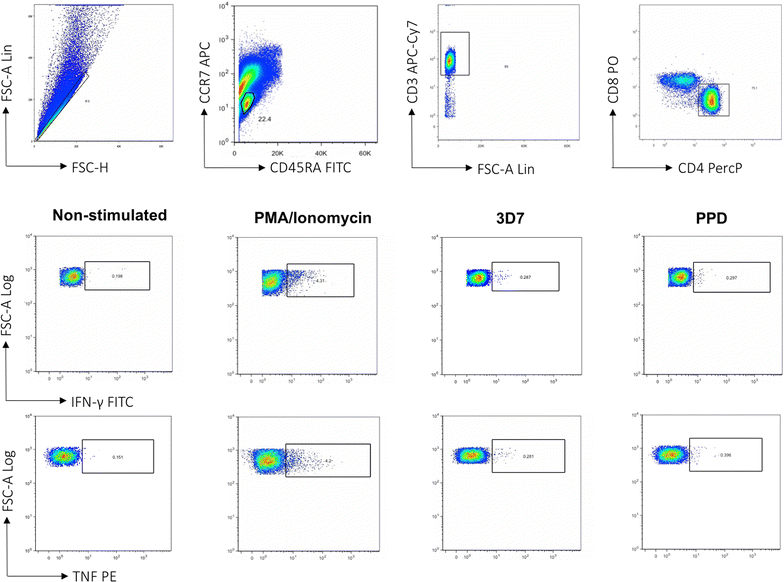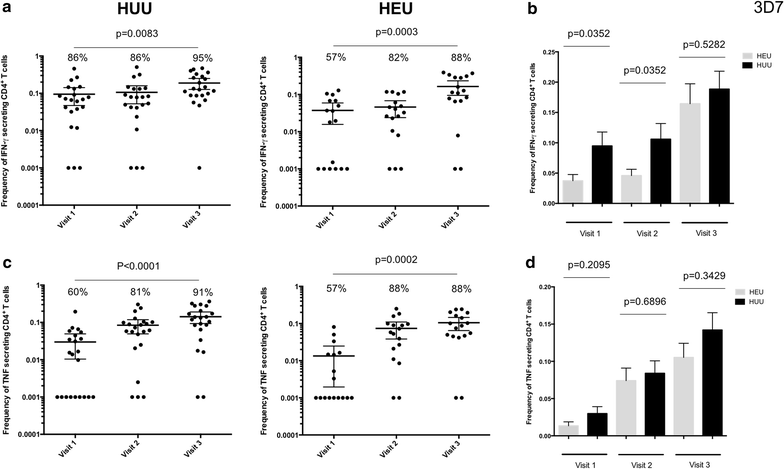Delayed acquisition of Plasmodium falciparum antigen-specific CD4(+) T cell responses in HIV-exposed uninfected Malawian children receiving daily cotrimoxazole prophylaxis
- PMID: 27165269
- PMCID: PMC4862093
- DOI: 10.1186/s12936-016-1318-2
Delayed acquisition of Plasmodium falciparum antigen-specific CD4(+) T cell responses in HIV-exposed uninfected Malawian children receiving daily cotrimoxazole prophylaxis
Abstract
Background: Cotrimoxazole (CTX) prophylaxis, recommended in HIV-exposed uninfected (HEU) children primarily against HIV-related opportunistic infections, has been shown to have some efficacy against Plasmodium falciparum malaria. The effects of CTX prophylaxis on the acquisition of P. falciparum antigen specific CD4(+) T cells-mediated immunity in HEU children is still not fully understood.
Methods: Peripheral blood was collected from HEU and HIV-unexposed uninfected (HUU) children at 6, 12 and 18 months of age. Proportion of CD4(+) T cells subsets were determined by immunophenotyping. P. falciparum antigen-specific CD4(+) T cells responses were measured by intracellular cytokine staining assay.
Results: There were no differences in the proportions of naïve, effector and memory CD4(+) T cell subsets between HEU and HUU children at all ages. There was a trend showing acquisition of P. falciparum-specific IFN-γ and TNF-producing CD4(+) T cells with age in both HUU and HEU children. There was, however, lower frequency of P. falciparum-specific IFN-γ-producing CD4(+) T cells in HEU compared to HUU at 6 and 12 months, which normalized 6 months after stopping CTX prophylaxis.
Conclusion: The results demonstrate that there is delayed acquisition of P. falciparum-specific IFN-γ-producing CD4(+) T cells in HEU children on daily cotrimoxazole prophylaxis, which is evident at 6 and 12 months of age in comparison to HUU age-matched controls. However, whether this delayed acquisition of P. falciparum-specific IFN-γ-producing CD4(+) T cells leads to higher risk to malaria disease remains unknown and warrants further investigation.
Keywords: CD4+ T cells; Cotrimoxazole; HIV-exposed children; Plasmodium falciparum.
Figures





References
Publication types
MeSH terms
Substances
Grants and funding
LinkOut - more resources
Full Text Sources
Other Literature Sources
Medical
Research Materials

